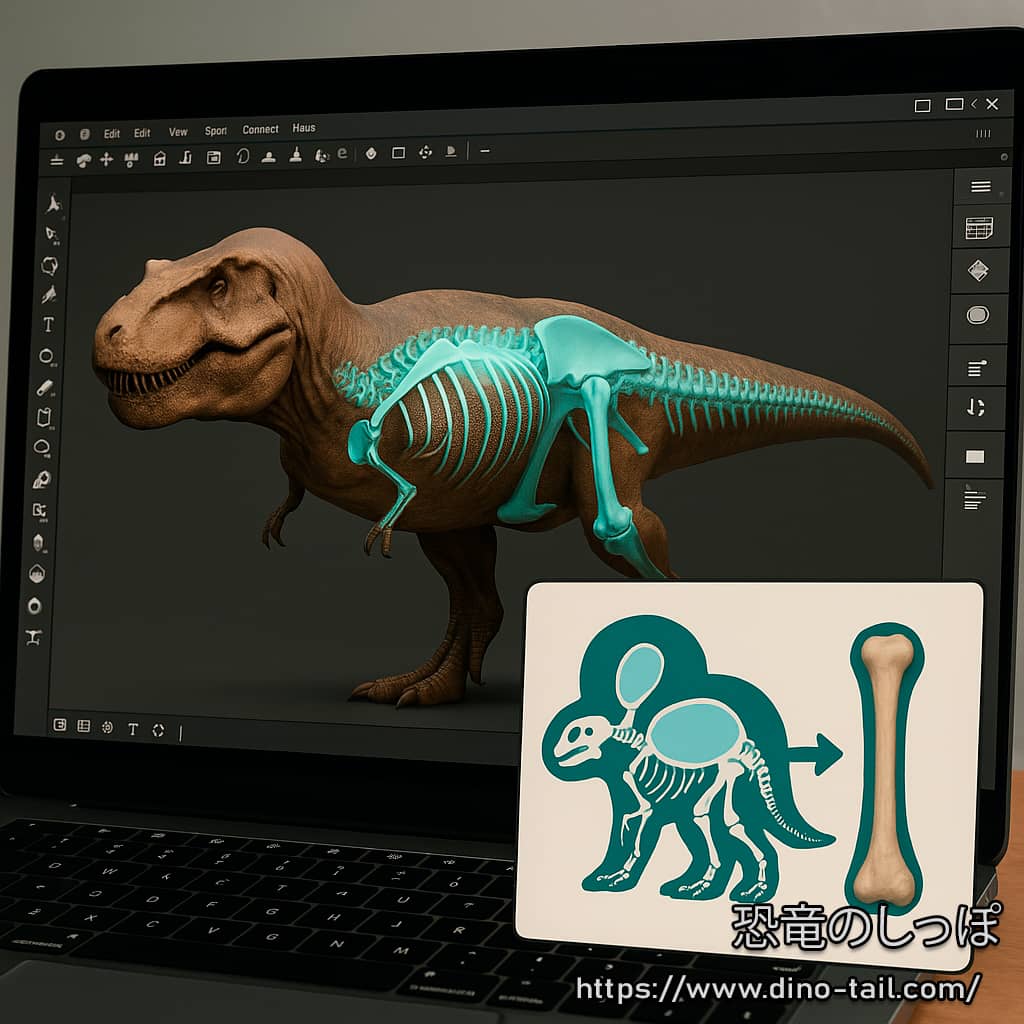Why Do We Want to Know the Weight of Dinosaurs?
When we hear that Tyrannosaurus was 13 meters long and Argentinosaurus was over 35 meters long and weighed over 60 tons, everyone is overwhelmed by their immense size. Size and weight are very important clues to understanding an animal's ecology (e.g., the amount of food it needed, its athletic ability, its growth rate). For living animals, we can simply put them on a scale, but how do we estimate the weight of extinct dinosaurs, for which only fossils remain?
Methods for Determining Volume from the Skeleton
The basic idea is to reconstruct the volume of the living body from the skeleton and then calculate the weight by multiplying that volume by its density . There are several approaches to this.
1. The Classic Method Using Physical Models
In the past, a method was used that applied "Archimedes' principle," where a scale model was created based on the complete skeleton fossil, and its volume was determined by the amount of water displaced when the model was submerged. However, the accuracy of this method had the drawback of being highly dependent on the skill and interpretation of the creator in accurately reconstructing soft tissues such as muscles and fat.
2. The Modern Method Using 3D Digital Modeling

In recent years, the mainstream method has been to 3D scan fossils to build a detailed digital skeleton model on a computer and then reconstruct soft tissues such as muscles, internal organs, and fat on it. The volume of this 3D model is calculated, and the weight is estimated by referencing the body density of modern animals (approximately 1 kg/L).
The advantage of this method is that it allows for the simulation of various muscle mass patterns, such as lean, standard, and obese, and provides a range for the weight estimate (e.g., "a minimum of 6 tons, a maximum of 9 tons"). The estimation that the largest Tyrannosaurus on record, "Scotty," weighed about 8.8 tons is a result of this method.
Method of Estimating from Comparison with Modern Animals
Another promising method is to use data obtained from modern animals. In large quadrupedal mammals (such as elephants and rhinos), it has been found that there is a strong correlation between the circumference (thickness) of the weight-bearing femur and humerus and the body weight .
By applying this relationship to the thickness of dinosaur bones, we can mechanically calculate how much weight that bone could support and estimate the body weight. This method is also useful for estimating the weight of dinosaurs for which only fragmentary fossils have been found.
Factors Complicating Estimation and Future Prospects
Although various methods have been developed, estimation is not easy. For example, for the same Tyrannosaurus specimen, the estimated values can vary greatly, from 4 tons to 18 tons, depending on the method and assumptions used.
The "Air Sac System" that Complicates Estimation
A factor that complicates the weight estimation of giant dinosaurs like sauropods is the existence of the " air sac system ." This is a system that modern birds have, where air-filled sacs are distributed throughout the body. This allows them to reduce their body weight while breathing efficiently. Many dinosaurs, especially theropods and sauropods, are thought to have had this system, and the inside of their bones was also hollow. The percentage of the total body volume that these air sacs occupied changes the density, which greatly affects the weight estimate, so researchers are also struggling with the reconstruction of the air sacs.
Integration of Multiple Methods
Therefore, to derive a more accurate weight, research is now underway to combine multiple approaches rather than relying on a single method. For example, estimations are made using both the "method of calculating mechanically from bone thickness" and the "method of determining volume from a 3D digital model," and the models are adjusted so that the results of both methods are close. This allows for the narrowing down of a more plausible weight range that is consistent with the strength of the skeleton.
It is hoped that further fossil discoveries and advances in analytical techniques will enable more accurate weight estimations in the future.
